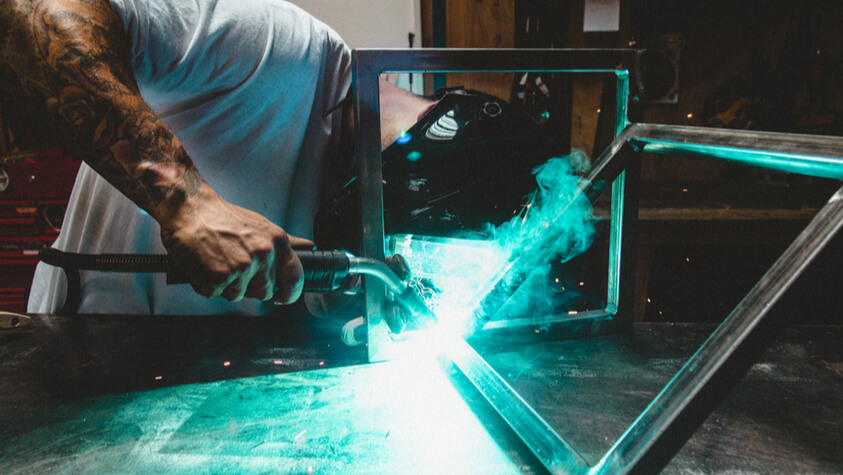By TACP Staff on July 09, 2021

Metal fabrication is a highly-specialized industry spanning from business research, interactive vehicle and chassis evaluations; welding front and rear suspension systems; to large-scale projects involving heavy equipment and large industrial structures. The fabricator has extensive knowledge of metals, their properties, and relevant engineering. To process raw materials, metal fabricators employ methods such as: cutting and burning; forming; machining; casting; chipping and powder coating.
Metal fabricators utilize raw materials, blueprints, and machinery to create a huge variety of items, from tools to car parts to art. In order to perform this job, individuals must learn technical skills and knowledge as well as learn how to operate the machinery needed to create the necessary items. Some metal fabricators may create a variety of parts, while others may specialize and work with only one type of part throughout the day.
Many of these professionals work in manufacturing plants and may spend long periods of time standing or sitting in one position. Others may work in smaller warehouses or buildings set up for metal fabrication. Most metal fabricators will work a regular 40 hour week if they work for an employer. Those who are self-employed have a more flexible schedule and can get projects done when they choose, but they may work long hours as deadlines loom. Structural metal fabricators hold approximately 79,700 jobs within the US, in a huge variety of industries, according to the Bureau of Labor Statistics.
The Bureau of Labor Statistics reports that the level of education needed will depend upon which industry and employer individuals are attempting to work for. Although some employers may require nothing other than a high school diploma, those who want to have great job prospects and opportunities should earn at least a bachelor’s degree in the industry they’d like to be employed in, or in engineering or manufacturing. There are certifications available for certain industries, as well, such as the Precision Sheet Metal Operator Certification available from the Fabricators and Manufacturers Association International.
The annual median salary for structural metal fabricators and fitters was $35,750 in May of 2012. However, this is just the center line; individuals can certainly earn significantly more than this depending upon their experience, education, and location. The states with the highest pay for these professionals are: Alaska ($46,880 annual median wage), Wyoming ($46,410), Vermont ($43,690), Connecticut ($43,280), and Minnesota ($43,020).
It’s difficult to pin down the job outlook for metal fabricators, as it can vary between the different industries that employ these professionals. For instance, the anticipated job growth of metal fabricators and fitters is about 4% through the year 2022, but for the aircraft products and parts industry, it’s expected to grow much faster. For the manufacturing industry, the job growth will largely depend upon the demand for certain items that require parts created by metal fabricators. The states with the highest level of employment for metal fabricators are: Texas, California, Pennsylvania, Ohio, and Wisconsin.
Consider these related careers in Craft and Fine Art.

The Art Career Project is a trusted resource for emerging and professional artists.